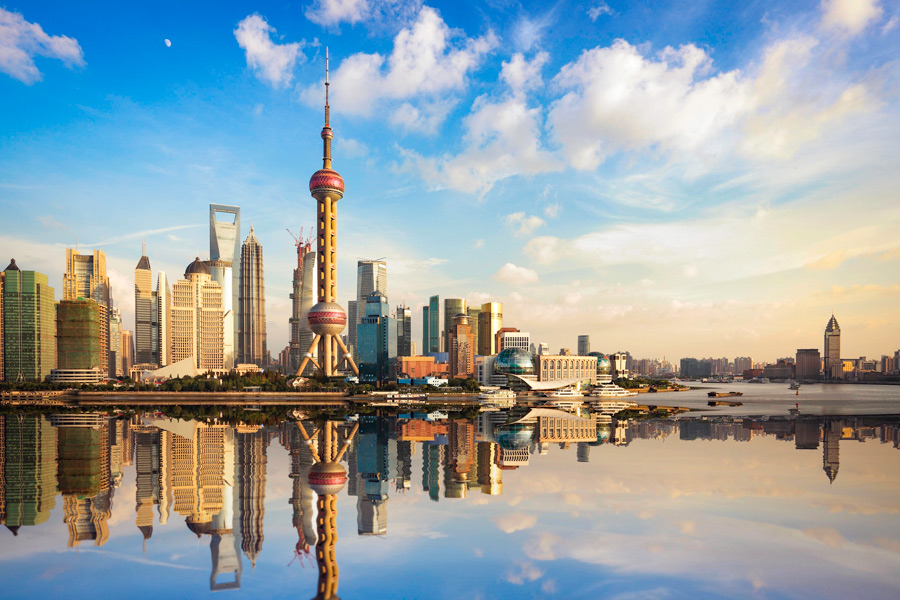
Shining glass, high-strength steel, and vast open sky meet at the river’s edge, where Pudong New Area rises in a stunning contrast to its past – just decades ago, this was a mix of farmland, industrial wharves, simple village housing, and a network of unpaved roads.
Now, spires of light pierce the clouds, and at night the skyline glows like an ambitious vision brought to life. Visitors often catch their first view from the opposite bank, standing at the historic Bund, witnessing the present in quiet dialogue with the future.
Is Pudong a city in Shanghai?
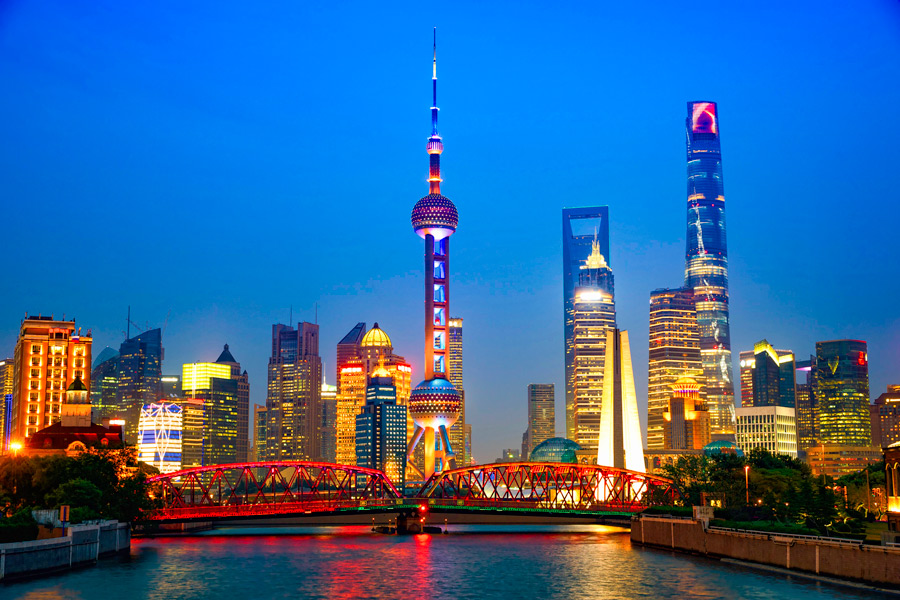
Not quite. Technically, “Pudong” (浦东) is the geographical name for all the land east of the Huangpu River.
Officially established as Pudong New Area in 1992, this administrative district was designed to position Shanghai as a global financial centre, a high-tech hub, and a showcase of China’s new era of openness.
Today it covers 1,210 square kilometres (466.1 square miles) and is organised into 12 sub-districts. Pudong New Area population is estimated at about 5.8 million, making it the home of the largest number of residents in Shanghai.
Pudong New Area encompasses its iconic skyline, busy and buzzing industrial zones, and a multitude of amusement parks, as well as tranquil suburban areas that stretch to the coast.
It is where business jets land and deals are signed, yet also where early morning tai chi fills the parks and a riverside walk might lead you from bold museums to hidden gardens in a single afternoon.
A journey in Pudong New Area can take many forms, each revealing a different facet of this vibrant district. In the next section, you’ll find a selection of tours and curated experiences to help you start exploring.
Pudong New Area Tours
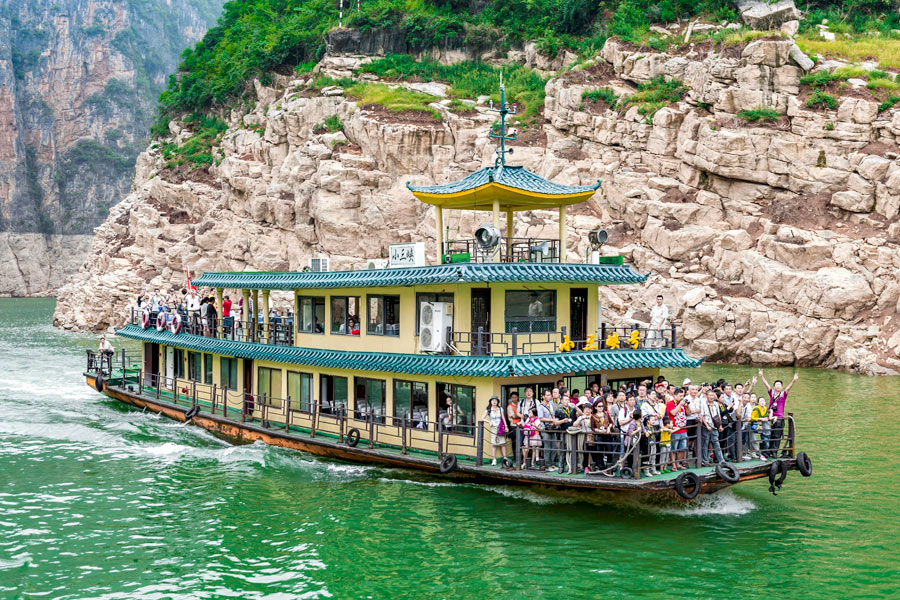
Pudong New Area gives travellers countless ways to glimpse Shanghai’s modern spirit. If you’re ready to experience this territory beyond the postcard images and video clips, our curated tours will provide an ideal introduction.
Small group tours to China are a great way to discover this incredible country. This 8-day tour is designed to showcase several of the country’s most iconic destinations, including a special visit to Shanghai’s Pudong New Area.
During your time in Shanghai, you will experience the city at its finest. Begin your exploration with a stroll along The Bund’s historic riverfront, then cross the Huangpu River by ferry to reach Pudong New Area. There, admire its soaring skyscrapers, ascend the iconic Shanghai Tower – the tallest building in the city – and wander peaceful promenades lined with elegant shops and cultural treasures.
For a slightly longer journey, this 10-day tour delivers a captivating exploration of China’s cultural and historical wonders. You will experience Beijing’s imperial grandeur, the ancient charm of Pingyao, and the vibrant pulse of Shanghai. Stand where emperors once ruled, wander centuries-old alleyways, and savour the sights of modern cities alive with new stories. In Shanghai, you will take a walking tour of Nanjing Road and The Bund to enjoy the city’s dazzling modern skyline before ascending the TV Tower by lift for a panoramic view of this dynamic metropolis.
Building on the classic 10-day route, this 12-day tour keeps all the must-see wonders, adding sacred peaks and age-old cave art. Along the way, you will discover Beijing’s imperial treasures and Xi’an’s ancient wonders before concluding your journey in vibrant Shanghai. Both tours feature a walking tour of famous Nanjing Road may bring unexpected shopping delights, and a stroll along The Bund will let you admire the city’s modern skyline. Additionall, an ascent of the TV Tower in Pudong New Area will reward you with a breathtaking panoramic view to tie it all together.
For a different kind of exploration, consider a comprehensive 15-day tour of China that includes a cruise on Yangtze River, the mighty waterway that winds through some of the country’s most picturesque scenery.
Discover China’s contrasts, encountering lively Hong Kong, peaceful rice fields in Yangshuo, and the dramatic Dragon’s Backbone terraces. Sail through the legendary Three Gorges and see the immense dam that tames the river’s flow. Walk the Great Wall, stand before Xi’an’s Terracotta Warriors, and soak in old and new Shanghai: shop on Old Street, cross the Huangpu River by local ferry, and ride a fast lift up Shanghai Tower to feel on top of the world.
At Advantour, we understand that everyone has a unique perspective on what makes a truly memorable journey. Should anything else spark your curiosity, we are here to design a visit that is as seamless as it is unforgettable.
Best Time to Visit Pudong New Area
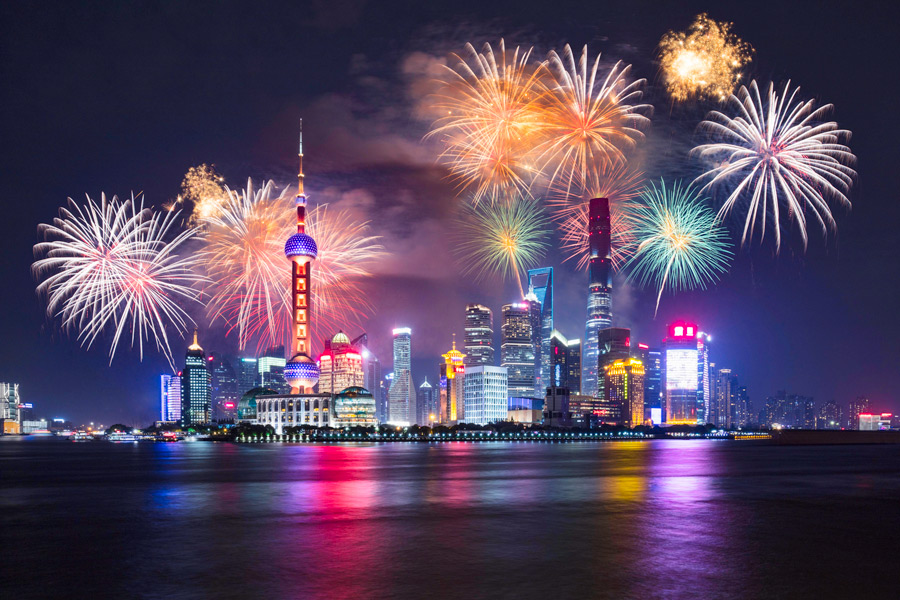
The best time to visit Pudong New Area is in spring – aim for the March to May window.
This is one of the most pleasant times of year to visit, with mild temperatures, fresh greenery in Century Park, and clearer skies that create ideal conditions for sightseeing. Early spring can still be cool, so it’s wise to bring a light jacket.
Summer (June to August) brings warmth and a lively atmosphere, though temperatures can climb well above 30°C (86°F). Occasional rain showers and high humidity are common. Early mornings and evenings are more comfortable for strolls and river cruises.
Autumn (September to November) brings a drop in humidity as summer fades, with crisp air and clear skies that many consider ideal for sightseeing. China’s National Day on 1 October marks the start of a week-long public holiday filled with ceremonies, parades, and festive performances. It’s a special time to experience local celebrations, but do keep in mind that transport hubs and popular sites may be livelier than usual. The Mid-Autumn Festival, which follows the lunar calendar and can fall in either September or early October, also draws people together and often adds to the crowds. This season is also busy for business travel, so hotels can fill quickly during major fairs and conferences.
Winter (December to February) is a quieter time, with fewer crowds and a calmer pace – except during Chinese New Year (also called Spring Festival). Temperatures can drop to around -11°C (12.2°F) but remain milder than in much of northern China. Haze and occasional overcast skies can limit visibility from observation towers, so it’s wise to check air quality and the weather forecast before visiting the highest platforms. Do note that Chinese New Year, which follows the lunar calendar and is celebrated nationwide, usually falls in late January or February. During this period, travel peaks as families gather, festivities fill the cities with colour and tradition, and hotel rates often rise significantly across the country.
Pudong New Area is impressive in every season, but its character shifts with the weather and time of year, offering distinct moods to suit different tastes.
History of Pudong New Area
What many see in Pudong New Area today is the result of one of the most ambitious urban transformations in modern history. Just a few decades ago, this area was nothing like it is now – the skyline did not yet exist.
Everything began to change in the late 1970s and 1980s, when China’s Reform and Opening-up (改革开放) policies took root under the leadership of Deng Xiaoping. In 1990, recognising Shanghai’s potential as a bridge between China and the wider world, the State Council announced a brave new chapter that marked the start of extraordinary modernisation. Within a remarkably short time, fields and warehouses gave way to soaring glass towers, welcoming an influx of international companies and global trade.
This dramatic growth has not only shaped the skyline but has also become a symbol of China’s drive to balance rapid economic expansion with cultural identity. Alongside futuristic architecture and world-famous brands, visitors can still find spaces where local traditions breathe.
Things to Do in Pudong New Area
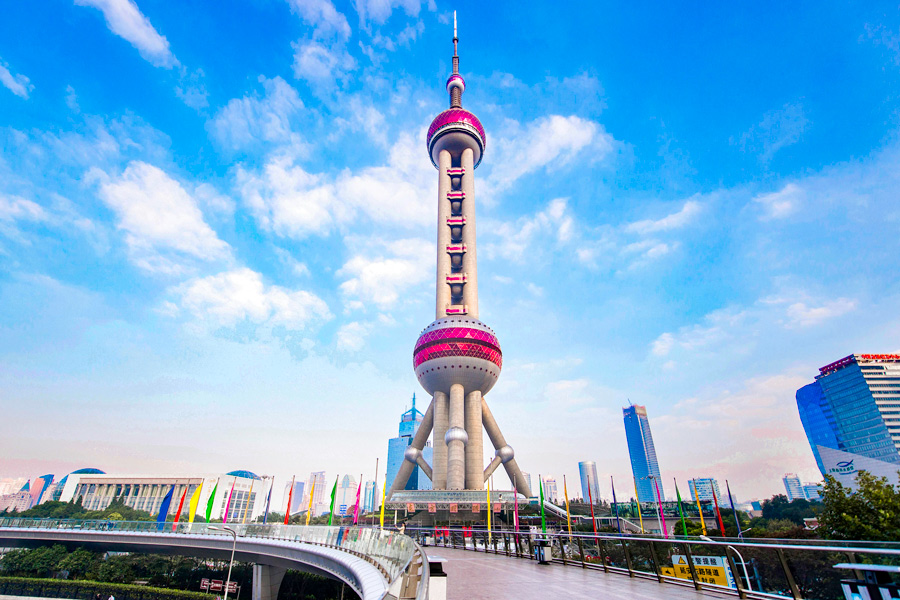
Pudong New Area combines the rhythms of a modern city with quieter corners, all equally worth discovering. Below are a few highlights to inspire your plans.
Places to Visit
No visit to Pudong New Area is complete without marvelling at its iconic, densely packed skyline shaped by the Lujiazui cluster.
The Oriental Pearl TV Tower (东方明珠广播电视塔), standing at 468 metres (approximately 1,535.43 feet), intrigues journeyers with its glass floor – thrilling for some, daunting for others – and a revolving restaurant that rotates about every 90 minutes.
Nearby, the Jin Mao Tower (金茂大厦), rising to 420.5 metres (1,380 feet) at the top of its spire, and the Shanghai World Financial Center (上海环球金融中心), reaching 494.2 metres (approximately 1,621.7 feet), stand tall on deep concrete piles and thick mat slabs, their steel frames and glass façades defining the daring vertical style of Pudong New Area.
Notably, the Shanghai World Financial Center, designed by Kohn Pedersen Fox Associates, was honoured with the prestigious CTBUH (Council on Tall Buildings and Urban Habitat) 10-Year Award in 2018, underscoring its enduring significance on the global skyline.
The Shanghai Tower (上海中心大厦), soaring to 632 metres (approximately 2,073.49 feet), is not only China’s tallest building but also the third tallest in the world, surpassed by Dubai’s Burj Khalifa and Kuala Lumpur’s Merdeka 118. Its gleaming double-skin glass façade rises skyward around a robust steel-and-concrete core, creating the illusion of a tower twisting in the wind. This architectural triumph has garnered global acclaim: the Shanghai Tower was crowned Best Tall Building Worldwide in 2008, won the CTBUH 10-Year Award in 2024, and was recognised as Best Tall Building in Asia & Australasia – honours that celebrate its innovation, sustainable design, and transformative impact on Shanghai’s urban skyline.
| Shanghai Tower | Shanghai World Financial Center | Oriental Pearl Tv Tower | Jin Mao Tower | |
| Height | 632 m (≈ 2 073.49 ft) | 492 m (≈ 1 614.17 ft) | 468 m (≈ 1 535.43 ft) | 420.5 m (≈ 1 379.59 ft) |
| Ranking Among Tallest Buildings in the World | 3rd | 12th | Tower is excluded from the CTBUH list. | 38th |
| Area | 380 000 m² (4 090 300 ft²) above grade | 381 600 m² (4 107 500 ft²) | - | 289 500 m² (3 116 000 ft²) |
| Number of Floors | 133 (5 below ground) | 101 (3 below ground) | equivalent to a 103-storey building | 96 (3 basement floors, 5 spire floors) |
| Construction completed | 2014 | 2008 | 1994 | 1999 |
| Historical Significance | Symbol of China’s rise as a global economic and technological power | Symbol of China’s emergence as a global financial hub | Representation of Shanghai’s modernity and cultural revival | A blend of China’s tradition and modern skyscraper design |
| Architect(s) | Gensler | Kohn Pedersen Fox Associates | Jiang Huancheng of Shanghai Modern Architectural Design Co. Ltd. | Adrian Smith at Skidmore, Owings & Merrill |
| Construction Cost | CNY 15.9 billion (approximately $2.4 billion) | CNY 8.17 billion (approximately $1.20 billion) | ≈ CNY 830 million (1994) $100 million | CNY 4.4 billion (1999) $530 million |
| Facilities Available to the Public | Observation decks, exhibition hall, shops & restaurants, indoor sky gardens & cafés, J Hotel. | Observation decks, shops & restaurants, conference spaces, hotel. | Observation decks, transparent skywalk, revolving restaurant, VR roller coaster. | Observation deck & glass skywalk, hotel with restaurants, conference/exhibition halls, retail shops. |
| Ticket Prices* | From CNY 90 to CNY 180/adult, higher during official and summer holidays ($12.50 To 25.05, £9.43 to £19.80, €10.85 to €23.40) | From CNY 120 to 180/adult ($16.72 to 25.05, £12.53 to £18.87, €14.50 to €21.70) | From CNY 99 to CNY -299/adult, higher during summer holidays ($13.77 to $41.60, , £10.37 to £31.34, €11.95 to €36.05 | Observation Deck CNY 120/adult $16.72, £12.53, €14.50) Jin Mao ‘Sky Walk’ with a trained professional : CNY 308/person (≈ $42.8, £32.5, €37.2) |
*Prices listed in this guide are applicable as of August 2025. Please note that these prices are subject to change without prior notice. Advantour does not accept responsibility for any discrepancies in ticket prices. We recommend checking the official websites or contacting the respective venues for the most current pricing information before your visit.
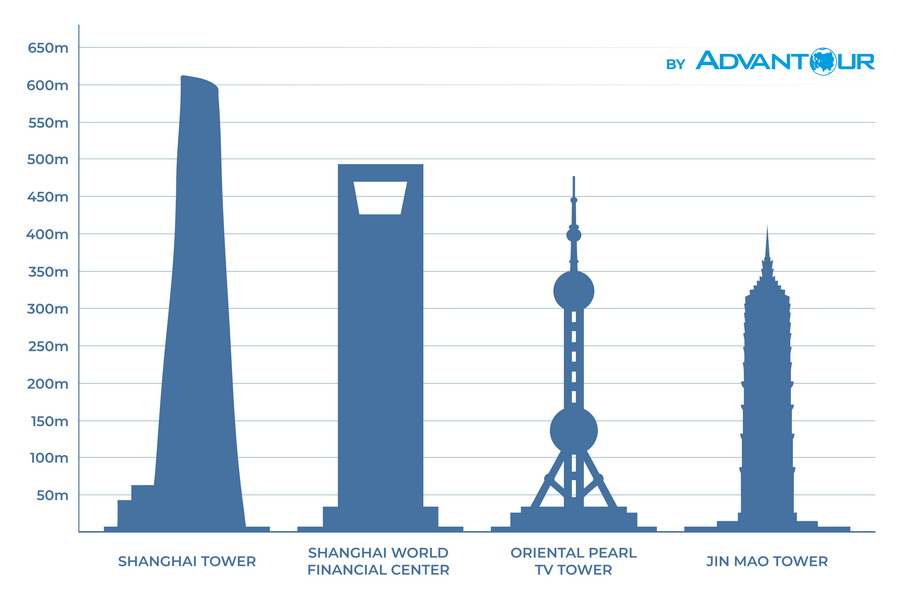
To take in those spectacular views, book your tickets in advance, plan for clear weather, and aim to visit early or at dusk to see the city laid out in the palm of your hand. After dark, Pudong New Area’s towers light up with lasers and colourful projections, presenting an entirely different perspective on the skyline.
Riverfront areas such as the Lujiazui Riverside Promenade (陆家嘴滨江长廊) are favoured for gentle walks with wide views of the Bund on the opposite bank. Nearby, the Lujiazui Central Green Space (陆家嘴中央绿地) is rich with lawns, shaded paths, and benches for quiet pause. Binjiang Avenue is another popular riverside stretch, lined with trees, cafés, and calm spots to watch boats drift past. Further south, the new Qiantan Waterfront Area is quickly becoming a modern leisure zone, with spacious walkways and pockets of greenery beside the river.
Temples
Step away from the busier riverside and you’ll find temples such as the Chuansha Confucian Temple (川沙孔庙) and the Qinci Yangdian Taoist Temple (秦慈杨殿) – also called the Royal Yangdian or simply Yangdian Temple – where drifting incense and ancient rituals linger in quiet courtyards. Not far away, the Chao Yin Temple (潮音庵) is a tranquil Buddhist sanctuary, originally founded in 1456 and rebuilt during the Qing Dynasty (ruled 1644-1911). Its peaceful grounds, traditional halls and a seven-storey Bao’en Pagoda hold a quiet retreat from the city’s bustle.
Museums
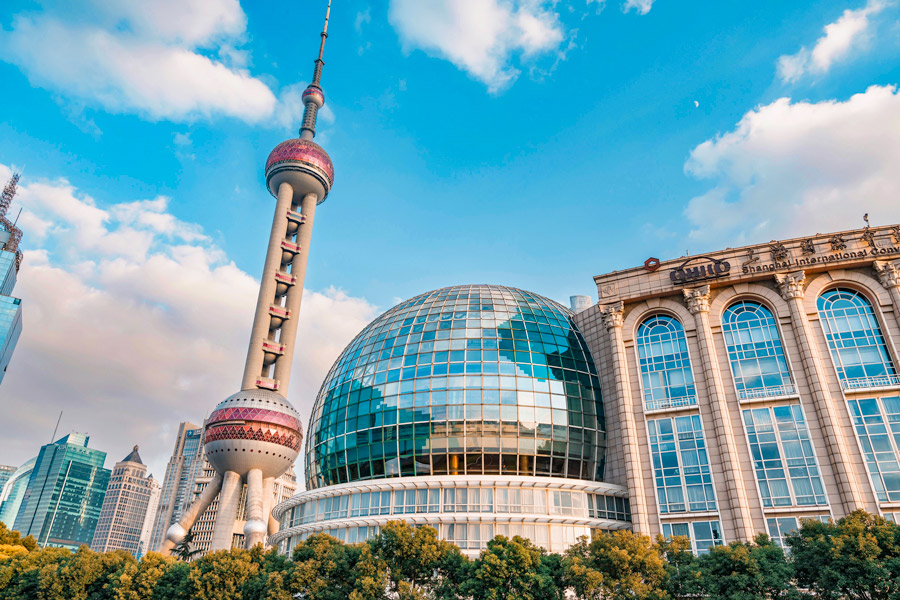
For inspiration, head to Pudong New Area’s museums, which reflect the district’s dynamic blend of science, art and modern culture. The Shanghai Science and Technology Museum (上海科技馆) is a favourite for curious minds, with its interactive exhibitions and popular themed zones, while the China Maritime Museum (上海中国航海博物馆) highlights Shanghai’s deep history as a major port and gateway to the sea.
The China Art Museum (中华艺术宫), housed in the former China Pavilion from Expo 2010, celebrates modern Chinese art in a striking architectural setting – its bright red building is hard to miss!
For contemporary works and major international exhibitions, the Museum of Art Pudong (MAP) (浦东美术馆) – sometimes called the Pudong Art Museum – stands on the riverfront, hosting rotating shows by renowned Chinese and global artists. Designed by the acclaimed French architect Jean Nouvel of Les Ateliers Jean Nouvel (AJN), whose work is celebrated worldwide for its innovative style, the museum adds remarkable architectural value to the district’s cultural waterfront.
Theatres
Alongside its museums, Pudong New Area’s cultural scene includes performance venues that host concerts, shows, and international acts throughout the year.
The Shanghai Oriental Art Center (上海东方艺术中心) is a landmark for music lovers, with its petal-shaped halls staging symphonies, ballet, opera and contemporary dance. Meanwhile, the Mercedes-Benz Arena (梅赛德斯-奔驰文化中心) draws large crowds for world-class concerts, major touring musicals, and sporting spectacles.
Entertainment, Parks, and Shopping of Pudong New Area
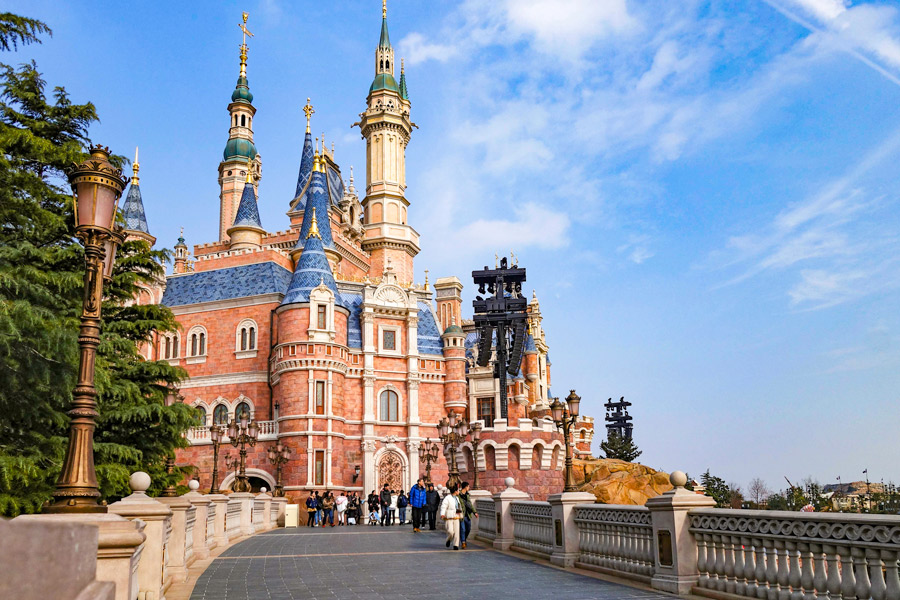
Pudong New Area hums with energy and diversity. You’ll hear bursts of family laughter in theme parks, see couples browsing in elegant shopping centres, and find neighbours mingling in leafy plazas and tucked-away markets. There’s always something happening, always something to enjoy.
Entertainment
Pudong New Area’s entertainment scene is as varied as its skyline.
Your day might begin with locals dancing in small groups in one of the district’s parks or by drifting down the Huangpu River on a scenic cruise.
Later, you could wander to Thumb Plaza, where a friendly expat vibe, leafy walkways, and cosy cafés set the stage for live music and community weekends. If you’d like to slow down, treat yourself to a soothing spa ritual or join a private wellness session.
Beyond these quiet hidden corners, Pudong New Area’s modern attractions include spaces designed for more active pursuits. The Shanghai Ocean Aquarium (上海海洋水族馆) is famed for its long underwater tunnel and diverse marine life.
Some travellers time their visits to coincide with local festivals, such as the Pudong Festival of Culture & Art (founded in 2011), the Peach Blossom Festival, which celebrates local heritage, the Jinqiao Tea Culture Festival with its tea tastings and social gatherings, or the Belt and Road Film Week, part of the New Silk Road initiative promoting cross-cultural exchange.
And when night falls, rooftop bars and lounges welcome you with skyline views and waterfront light shows – what a way to end a splendid day.
Parks
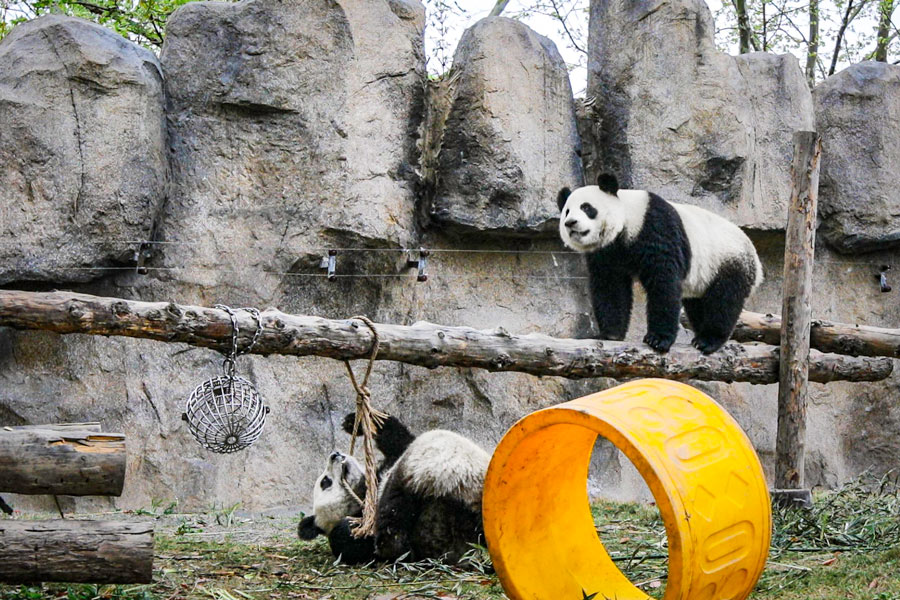
Pudong New Area’s parks range from peaceful green retreats to lively amusement destinations, inviting guests to enjoy quiet strolls or thrilling adventures. Century Park (世纪公园), the city’s largest green space, boasts lakes, meadows, and trails perfect for soaking up nature or cycling. Shanghai Wild Animal Park (上海野生动物园) brings families up close to wildlife, while Shanghai Haichang Ocean Park (海昌海洋公园) combines marine life encounters with themed rides that create an immersive underwater world. Topping it all off, Shanghai Disneyland (上海迪士尼乐园) enchants guests with fairy-tale lands, dazzling shows, and blockbuster rides.
Shopping
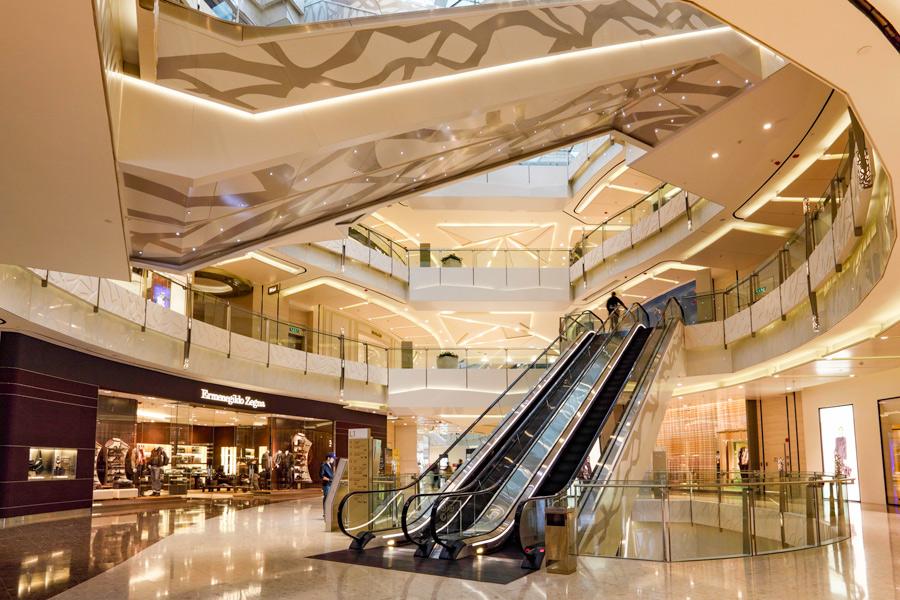
While traditional street markets are more common on Shanghai’s historic western side in Puxi, Pudong New Area is best known for its sleek modern malls, flagship stores, and stylish shopping plazas.
Luxury labels and designer boutiques fill Pudong New Area’s premier retail centres – the IFC Mall (上海国金中心商場) and Super Brand Mall (正大广场) combine fashion, dining, and skyline views all under one roof.
Larger department stores and shopping centres cater to everyday needs too, with Kerry Parkside Mall (浦東嘉里城) offering a friendly vibe and a good mix of international brands.
For something different, the River Mall (世博源大门) sits within the Expo Axis – the vast, permanent structure originally built for the Shanghai World Expo 2010 – which has since been transformed into a shopping and leisure destination that blends modern retail with a touch of history.
Occasional farmers’ and craft pop-ups add a sense of surprise, inviting guests to slow down and browse handmade gifts or fresh local produce when they appear.
Beyond the big global names, Pudong New Area rewards shoppers who take the time to seek out traditional crafts and locally made treasures – acquiring these for your collections is a wonderful way to support local traditions and businesses.
Food in Pudong New Area
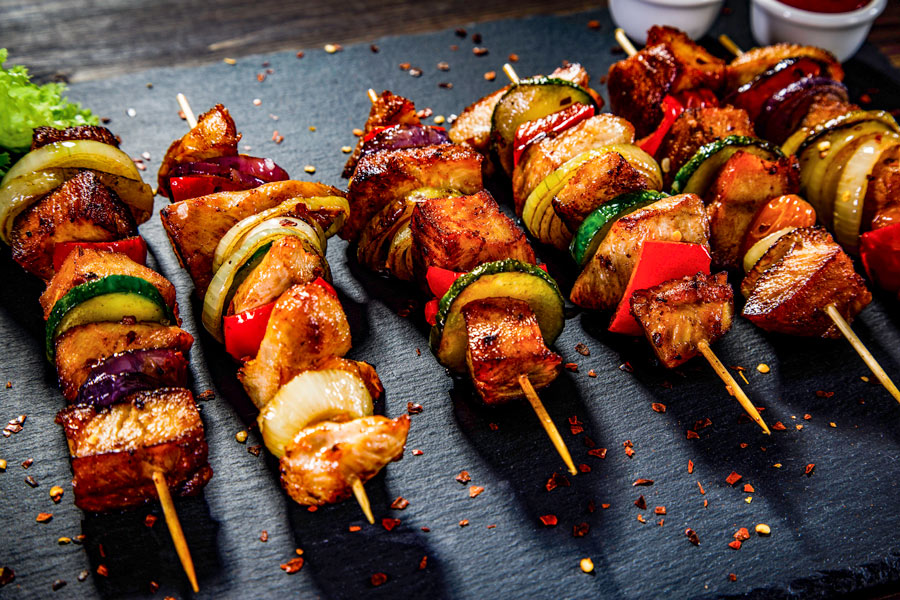
Pudong New Area’s food culture honours Shanghai’s rich culinary heritage while satisfying locals’ yen for fresh tastes and new ideas.
Chinese Cuisine
Local specialities truly shine here. Delicate steamed soup dumplings filled with rich broth and crisp-bottomed pan-fried buns with juicy fillings are unmissable classics. Fresh river fish and seafood dishes reflect the region’s Jiangnan culinary roots, whilst street stalls tempt food lovers with skewers, savoury scallion pancakes, and sweet sesame treats.
In stylish dining spots and upscale restaurants across Pudong New Area, chefs continue to reimagine these traditional favourites, showcasing seasonal ingredients and refined presentation.
For an unforgettable meal, consider Moose Pudong – a Michelin one-star restaurant known for its refined take on local flavours – or dine at the revolving restaurant atop the Oriental Pearl Tower, where Chinese and international dishes come with impressive skyline views. For something very heart-warming and down-to-earth, Grandma’s Home in the six-storey IFC Mall is a local favourite for its authentic Shanghainese home cooking.
Vegetarian Restaurants
Vegetarian food is widely appreciated in China, with restaurants showcasing creative dishes made from tofu, mushrooms, and local greens. Plant-based versions of traditional favourites delight diners seeking alternative options, and these can be found in peaceful temple restaurants or stylish modern spots like YICAFE at Pudong Shangri-La Hotels and Resorts. This international restaurant serves a wide range of Chinese, Western, Japanese, Middle Eastern, Malaysian, Thai, and Indian cuisines.
Another highly praised choice is Qingchun Perma, known for its diverse menu and the frequent comments that ‘anything on the menu is delicious’ from customers.
Tea Houses, Bakeries, and Patisseries
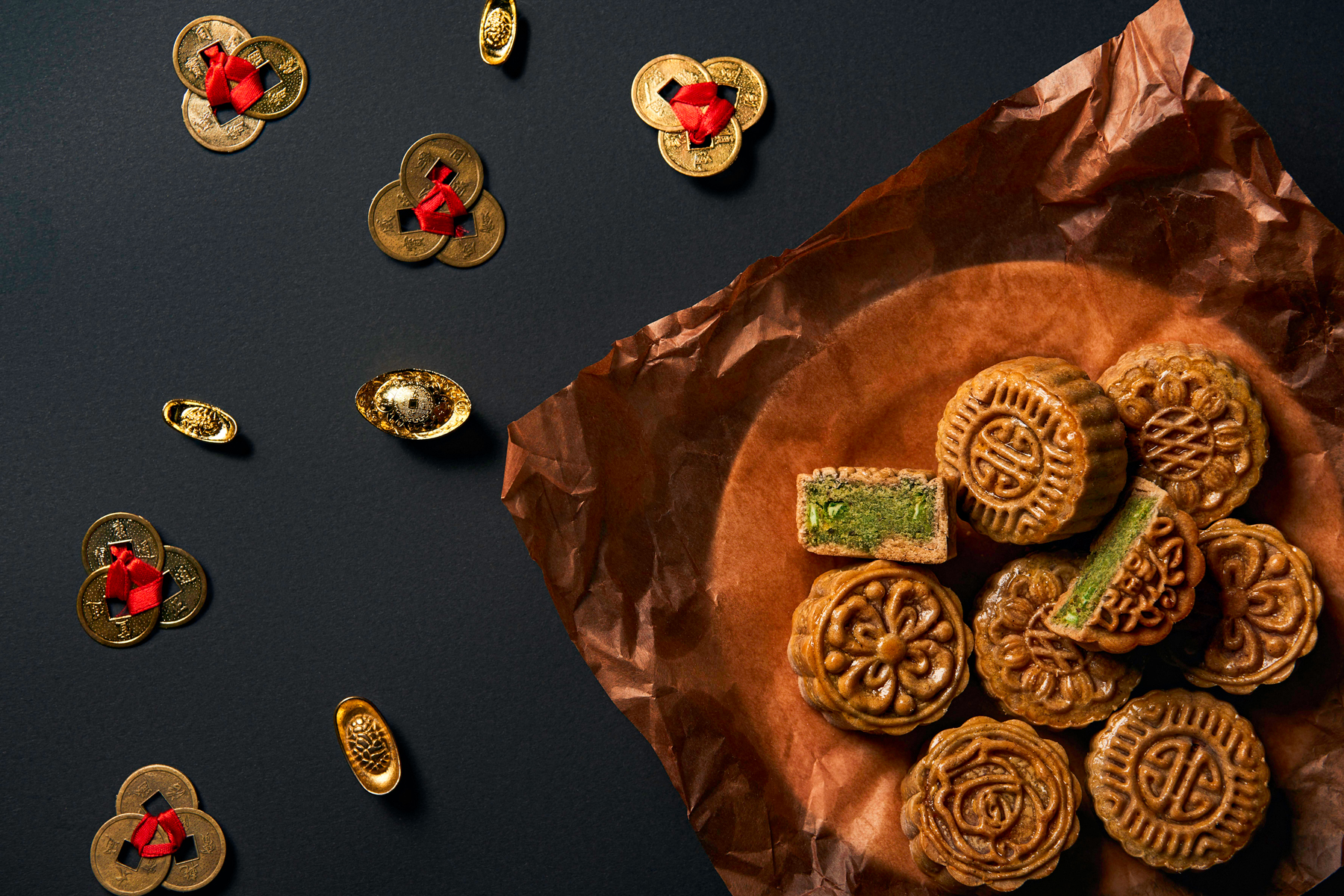
For a quiet pause, places like Chaffee (乐活时禅茶空间), a Zen-inspired teahouse, invite you to linger over fine teas and calm surroundings.
Chinese pastries such as longevity peach buns and fish-shaped rice cakes are more than treats. They carry wishes for luck, long life, prosperity, weddings, and rituals honouring ancestors and Buddha.
Cake shops like The Mandarin Cake Shop (文华西饼屋) at the Mandarin Oriental Pudong Hotel brim with fresh pastries that blend Western and Chinese flavours – just right for an afternoon indulgence or a sweet gift to take home.
Daoxiangcun (稻香村) is a centuries-old Chinese pastry brand, famed for traditional treats like mooncakes, sesame cakes, and bean paste pastries. With historic roots in both Beijing and Suzhou, two separate Daoxiangcun companies continue to vie in court over the famous name – yet many customers can’t tell them apart.
Kee Wah Bakery (奇華餅家公司), a beloved Hong Kong institution since 1938, offers its renowned mooncakes and traditional pastries at its elegant shop in Shanghai’s IFC Mall. It’s a perfect stop for sampling classic Chinese treats in a modern setting.
Founded in 1851, Xinghualou (杏花楼) is one of Shanghai’s oldest and most cherished brands, famed for its exquisite mooncakes and time-honoured recipes. Since 1997, its secret recipe has even been safeguarded in a vault – a testament to the brand’s heritage craftsmanship and thoughtful innovation, ensuring these festive treats remain beloved in China and beyond.
City Transport
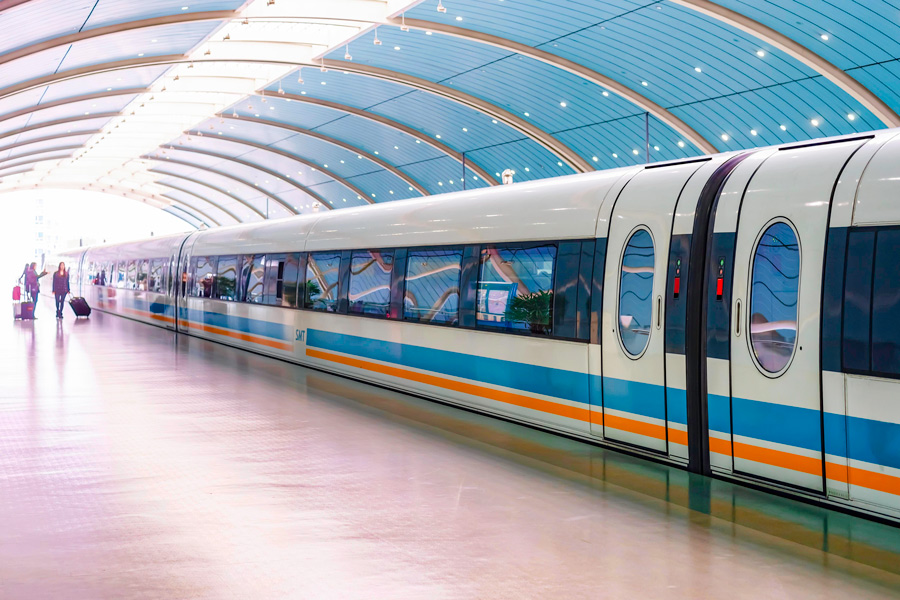
Pudong New Area is remarkably easy to explore thanks to Shanghai’s excellent public transport network. Whether you prefer a train or a gentle riverside stroll, getting around is pretty convenient.
Public Transport
The Shanghai Public Transportation Card (SPTC) is highly recommended. This reloadable smart card can be used on the metro, buses, ferries, and some taxis (not all taxis accept it – many prefer cash, WeChat Pay, or Alipay). This card also works for the Maglev train.
Metro and Maglev trains
Shanghai’s Metro is one of the world’s most efficient urban networks, and Line 2 is the main lifeline through Pudong New Area, linking key spots like Lujiazui and Century Park with the rest of the city. For a thrill, take the Maglev (magnetic levitation) train – this high-speed link runs between Shanghai Pudong International Airport (PVG) and Longyang Road Station. It often glides along at 300 km/h (about 186 mph), covering the 30 kilometres (18.6 miles) in just over eight minutes. At Longyang Road Station, you can easily transfer to Metro Lines 2, 7, 16, or 18 to continue your journey.
Buses and Trams
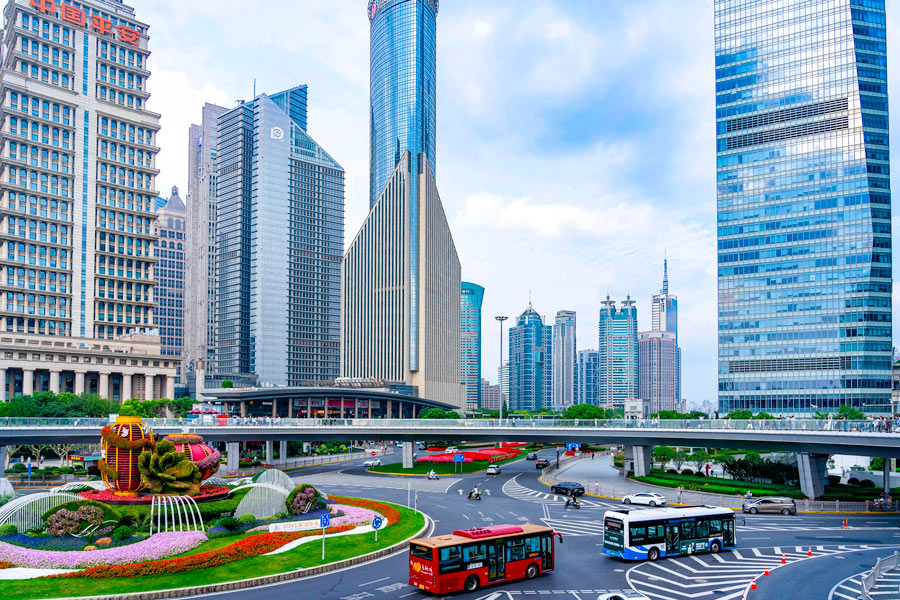
Pudong New Area’s bus network operates nearly 300 daytime routes, connecting its residential sectors, the financial hub at Lujiazui, Zhangjiang Hi-Tech Park, and several metro interchanges. Most urban buses are modern, low-floor, battery-electric vehicles, with articulated ‘bendy’ buses deployed on the busiest corridors. Travellers might also spot a modern ‘tram on virtual tracks’ in the Lingang area – an innovative system that opened in 2021. This driverless line uses rubber-tyred vehicles guided by magnetic sensors, gliding like a tram but without the need for rails.
Ferries
Crossing the Huangpu River by ferry is not only practical but scenic too, an experience rich with lovely river views between Pudong New Area, The Bund, and other historic neighbourhoods on the Puxi side. Journeys usually take 5 to 10 minutes and run frequently from early morning until late evening. Fares are often just a few yuan – and you can use a Shanghai Public Transportation Card to pay. Most ferries are simple but comfortable, with indoor seating and open decks if you’d like to feel the river breeze along the way.
Taxis
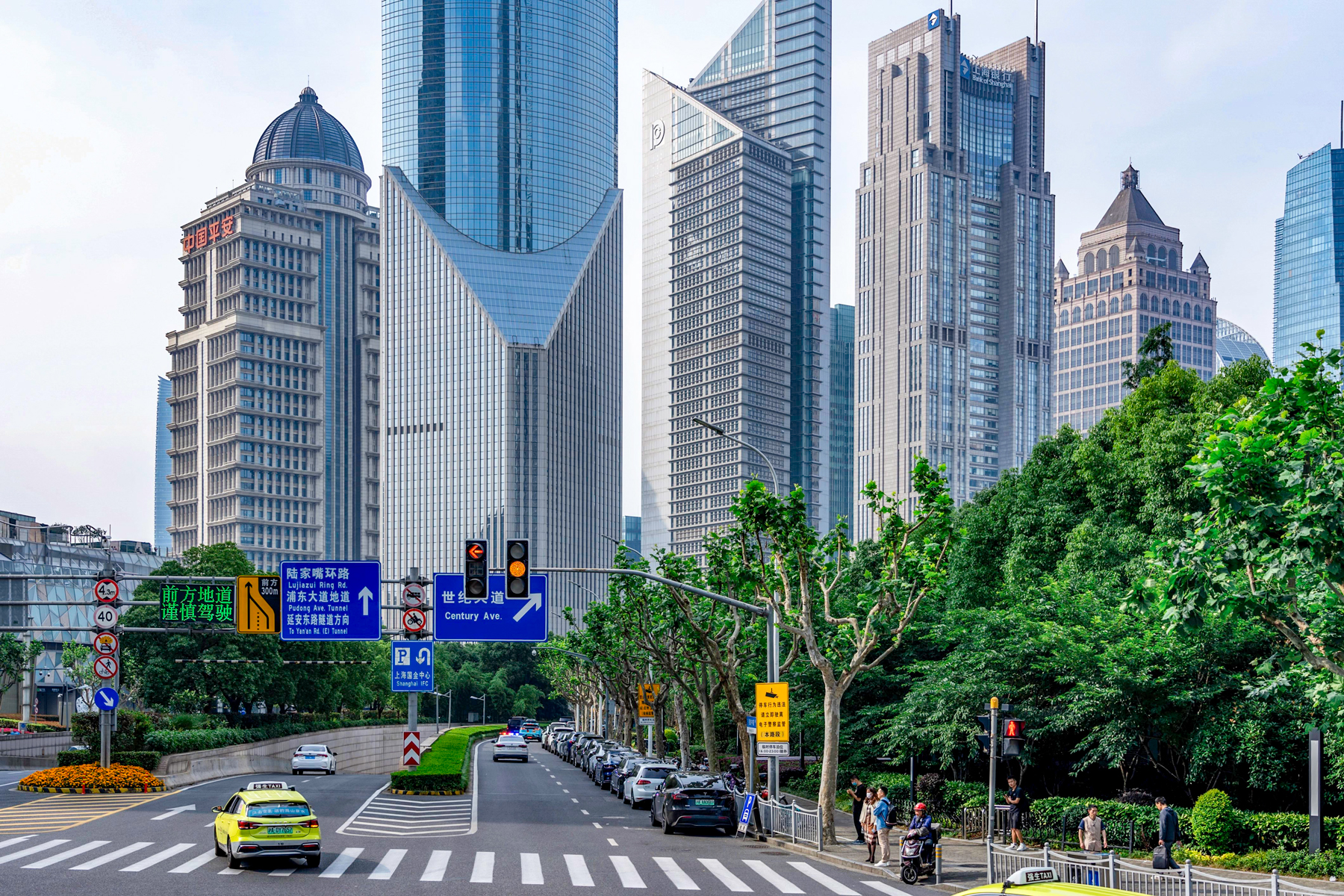
Licensed taxis are widely available and provide a comfortable option, especially in the evening. Ride-hailing apps like DiDi are popular and easy to use. Just remember that it can be helpful to have your destination written in Chinese for the driver.
Car Rental
Driving yourself around Pudong New Area is possible, but certain steps must be taken. Travellers can obtain a provisional Chinese driving permit without exams by presenting a valid foreign driving licence (with a certified Chinese translation), passport, visa, and a passport-style photograph at the local traffic police station. This permit is valid for 90 days and can be renewed to coincide with your visa. It is advisable always to carry your permit with you.
Reputable car hire operators include international brands such as Hertz and Avis, as well as local firms like eHi Rent-a-Car.
Petrol costs around RMB 8 to 10 CNY/RMB ($1.11 to $1.39, £0.83 to £1,04. €0.96 to €1.20) per litre, payable in cash or via mobile apps (Alipay/WeChat). Expect to pay 5 to 10 CNY/RMB ($0.70 to $1.39, £0.52 to £1.04. €0.60 to €1.20) per hour for municipal parking, which is also settled by QR code scanning.
For navigation, download AutoNavi or Baidu Maps, and plan journeys outside the rush hours of 07:00 to 09:00 and 17:00 to 19:00.
Driving yourself can be an adventure and an excellent way to explore freely. However, due to heavy traffic and the time spent searching for available parking, a more relaxed option for sightseeing is to hire a car with a private chauffeur to drive you around the city.
Other Modes of Transport
Pudong New Area boasts over 25 kilometres (15.5 miles) of riverside trails along the Huangpu River, including the East Bund Path from Yangpu to the Xupu Bridge, with dedicated cycling and jogging lanes separated from pedestrian areas. Inland, the Shanghai Greenway links parks via traffic-calmed cycle lanes and wide footpaths, offering uninterrupted routes around Qiantan and beyond. Most paths are well lit and clearly signed, though some sections can feel busy or dim after dark, and bicycles are prohibited on certain major roads and bridges. Bike-share schemes and guided tours make exploring Pudong New Area both safe and scenic.
How to Get to Pudong New Area?
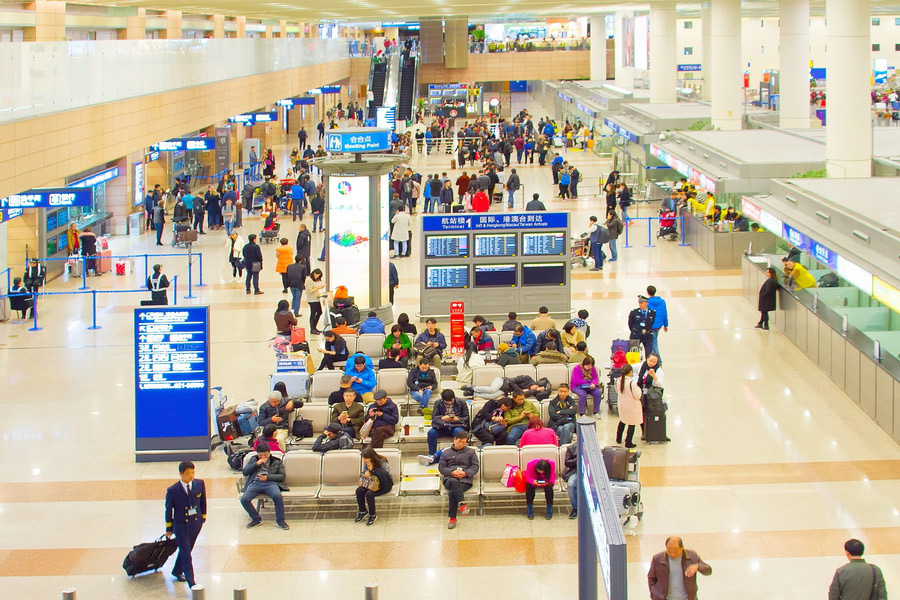
Pudong New Area is well connected to the rest of Shanghai and nearby cities by air, rail, and road.
Most international travellers arrive at Shanghai Pudong International Airport (PVG), located about 30 kilometres (18.6 miles) from the city centre. The airport links directly to Pudong New Area via the high-speed Maglev train, metro lines, taxis, and airport shuttles.
From central Shanghai, the easiest way to reach Pudong New Area is by metro – Line 2 is the main connection, serving popular stops such as Lujiazui and Century Park. Taxis and ride-hailing apps are also widely available and convenient for door-to-door travel.
If you are arriving by high-speed train from other cities, you will likely reach Shanghai Railway Station. From there, Pudong New Area is easy to get to by metro or taxi.
Currency
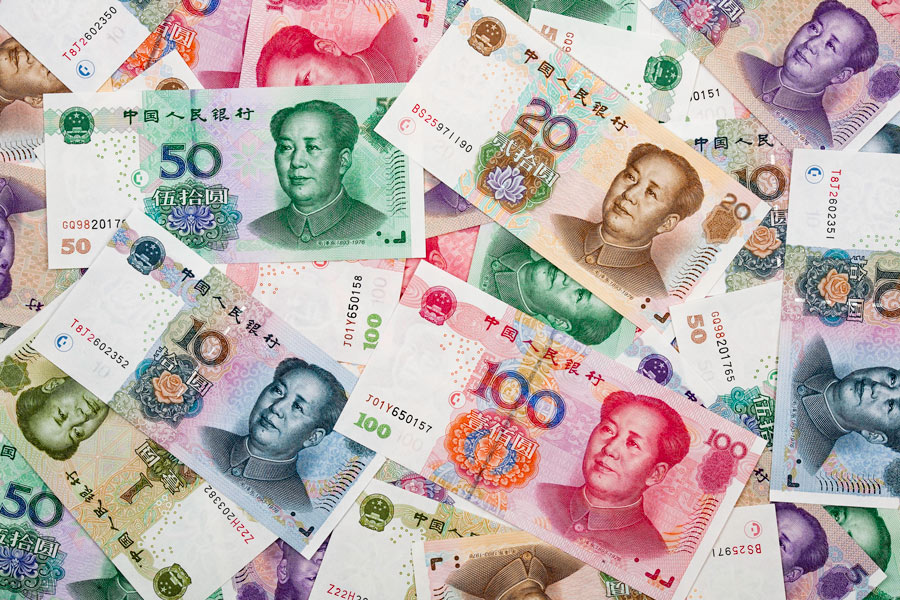
The official currency across China is the Chinese yuan (CNY, RMB, ¥). Banknotes range in value from 1 to 100 yuan, while coins come in 1-yuan pieces, plus 5 jiao (0.5 yuan) and 1 jiao (0.1 yuan) denominations.
The yuan’s official name is ‘renminbi’, meaning ‘the people’s currency’ – a term first used after 1949. Visitors will notice Mao Zedong’s portrait on all modern banknotes, though older notes once featured famous Chinese sites and ethnic groups – a delight for collectors.
In daily life, mobile payments rule. Apps like Alipay and WeChat Pay cover almost everything, from taxis to street stalls. International cards are widely accepted at major hotels and big-name stores, but it’s wise to keep some cash and smaller notes handy for local purchases.
Security
Pudong New Area is considered one of the safest and most comfortable districts to explore in Shanghai. Its modern streets, excellent lighting and visible security presence create an atmosphere where visitors can relax and enjoy both day and night. Locals and temporary visitors alike stroll along the Huangpu riverside or admire the skyscrapers of Lujiazui well into the evening.
Although violent crime is extremely rare, it remains sensible to stay aware of your surroundings, especially in busy places such as large shopping centres or metro stations. Use an anti-theft bag or crossbody bag, keep your valuables secure, and make use of your hotel safe for passports and spare cards.
Before heading out, it’s worth saving local emergency contacts and your embassy’s details, just in case. Many travellers also choose to buy a local SIM card or portable Wi-Fi device to stay connected for maps, cashless payments and translation apps.
For extra comfort, some visitors book guided tours or private drivers to navigate the city with ease, which is particularly useful if you’re travelling with children or on a tight schedule.
With a few common-sense precautions, Pudong New Area can be a safe, modern base for experiencing Shanghai’s dynamic skyline and vibrant city life.
Tips for Visitors
- English is widely understood in hotels and major attractions, but learning a few simple phrases in Mandarin is always appreciated.
- Many restaurants use QR code menus, so having your phone and mobile data ready is helpful.
- Offline mobile payments – Alipay and WeChat Pay let you preload funds in your digital wallet, so if your mobile data connection is spotty (like in tunnels or museums), you can still pay by scanning a QR code at the terminal.
- Always carry your passport for ID checks, and keep a translation app handy for taxis or small shops.
- Local people value polite behaviour and calm conversation – speak softly in public spaces and respect personal space when queuing.
- When visiting sites of worship, dress modestly (shoulders and knees covered).
With these small considerations, you’ll navigate the Pudong New Area with ease and confidence.

